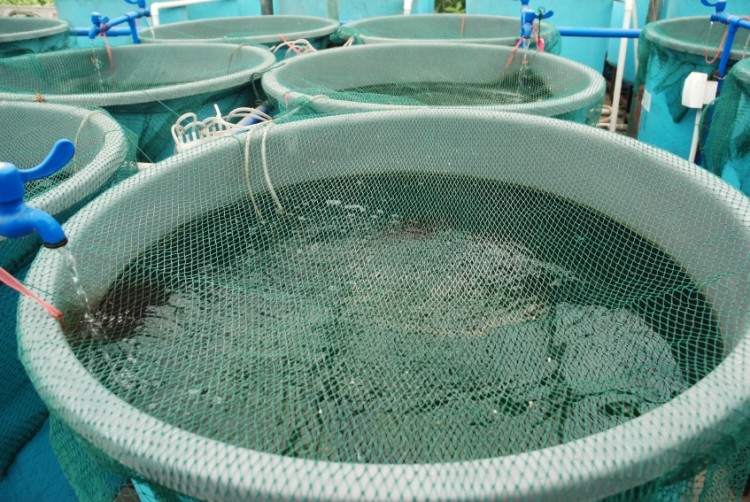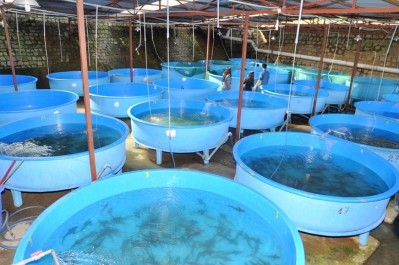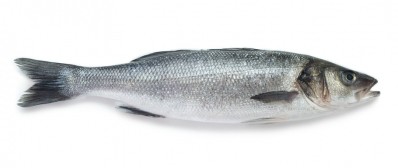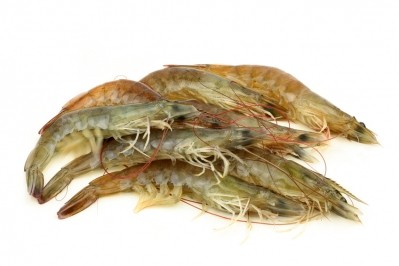Fishmeal-free diets alter gut microbes, but cleared for use in recirculating systems

A group of US researchers examined what it can mean to replace fishmeal in farm-raised salmon diets for the gut health and microbiome of the fish and the functioning of the bio-filters in a recirculation aquaculture system (RAS).
Fishmeal-based feeds are an economic and environmental concern for aquaculture producers, because the feed ingredient has shown volatility in pricing and is often sourced from finite wild fish sources, they noted.
Novel protein diets are one way to address that issue, said the US team. But they said little is known about what those feeds will mean for the sustainability of the aquaculture production environment and the microbial communities involved.
The researchers, thus, examined what influence fishmeal-free diets had on the microbial communities in the water of RAS systems, the bio-filters used and in salmon microbiomes.
The fishmeal replacement, of which the primary protein sources were mixed nut meal and poultry meal, did not have any adverse effects on the functioning of the production system or the farm’s microbial habitat, but they raised the amounts of lactobacillales found in salmon intestines.
“The results of this study suggest that bio-filters are resilient to changes in diet composition, and that producers utilizing RAS can keep this in mind as diets are further developed and refined over time,” lead researchers Christopher Good and Steven Summerfelt, from the Conservation Fund’s Freshwater Institute, told FeedNavigator.
“[But] there are numerous types of bio-filters and many options for modifying traditional diets, not to mention important basic differences in water quality parameters between production facilities, and therefore further research is needed in this area to assess the impacts of dietary changes under other experimental or commercial conditions," added the duo.
Alternative feeds
The group was interested in exploring the replacement of fishmeal on the overall production capabilities and seeing what it might mean for different aquaculture systems, said Good and Summerfelt.
“The function and efficiency of unit processes such as drum filters, gas conditioning units, and bio-filters in RAS can be affected by changes in water quality, and because feed type and characteristics can impact water quality, we’re very interested in assessing any changes to system and fish performance that might be related to alterations in diet composition,” wrote the researchers.
The increasing growth of aquaculture systems emphasizes the need for ways to ensure a consistent environment and microbiological conditions for farm-raised fish, they noted.
RAS bio-filter stability is needed because it helps with nutrient processing and to maintain water quality, they said. Yet the influence of alternative, or fish-meal free, diets on bio-filters is unknown.
Some past research has suggested that fishmeal-free diets generate an altered gut morphology in fish and generate increased levels of ammonia and nitrate in fish waste, they said. More research is needed to understand the full effect of alternative diets on fish production.
The study
In the experiment, 1,320 Atlantic salmon were raised for six months to market size using one of two diets, said researchers in the report. The diets included a traditional feed with fishmeal (FM) and a fishmeal-free version (FMF).
Gill and intestinal samples were taken from the grown fish, said the researchers in the report. The water and bio-filter media also were tested at the end of the experiment.
Fish length and weight were measured every month during the experiment and thermal growth coefficients were calculated, they said.
Results
Nitrate-nitrogen and ammonia nitrogen levels were higher for the fishmeal-free tanks, while phosphorus, suspended solids and true color were increased for fish getting a traditional diet, said the researchers. But all water quality levels were within guidelines.
No significant differences were found for salmon growth performance, they said.
The diets also were not demonstrated to significantly influence the microbial communities in the bio-filters, but they did alter the bacteria found in fish intestines, said the researchers.
There were fewer microbe communities found in the intestinal and gill samples, when compared to the bio-filter and water samples, said the researchers. And sequencing depth was higher for the bio-filters and water.
The largest difference found was that tanks getting the fishmeal-free diet had a greater richness and diversity of bacteria present in the bio-filters.
“At this stage we are only beginning to understand the full microbial ecology of bio-filters and RAS water, so it is difficult at present to interpret what the observed differences in FM and FMF microbiomes really mean from a practical perspective,” said Good and Summerfelt. “That said, however, a greater diversity of microbial communities suggests a more stable microbial ecology.”
Fish getting both diets had high levels of lactobacillales, aeromonadales and actinomycetales in their intestines, said the researchers in the report.
The were more steptococcus found in fish getting the fishmeal diet than the alternative diet and a higher quantity of Lactobacillus strains present in the fishmeal-free areas.
Not enough information is available to predict what those changes in gut bacteria will mean for the physiology of the fish, said Good and Summerfelt.
What’s next?
More work is needed to fully understand the interaction between feed ingredients and production systems, said Good and Summerfelt.
“The characterization of RAS microbiomes will become more widespread and we will eventually have enough data to judge the ‘health’ of recirculation systems by the overall composition of their microbial communities,” they said.
Additional research should look at increasing identification of areas harboring pathogens or bacteria within production systems, urged the scientists.
Additionally the group has continued work with the US Department of Agriculture’s (USDA) Agricultural Research Service (ARS) to test new diets, said Good and Summerfelt
“We just completed a semi-commercial feed trial with Atlantic salmon using a variation on this diet that Ewos/Cargill is now marketing in North America,” they said. “In addition, we are currently finishing up a study assessing novel protein sources and rainbow trout growth performance.”
The research project was supported by USDA’s ARS agreement with the Freshwater Institute and grants from the National Science Foundation.
Source: Applied and Environmental Microbiology
Title: The influence of fishmeal-free diets on microbial communities in Atlantic salmon Salmo salar recirculation aquaculture systems
DOI: doi:10.1128/AEM.00902-16
Authors: Victor Schmidt, Linda Amaral-Zettler, John Davidson, Steven Summerfelt, and Christopher Good












